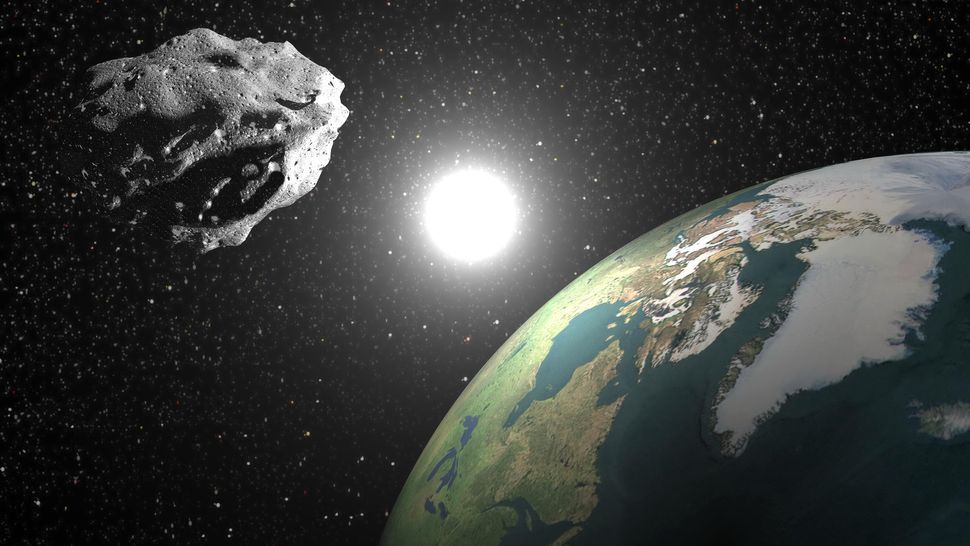Science
NASA Confirms Earth’s New “Second Moon” Quasi-Moon Asteroid

On October 22, 2025, NASA announced a significant discovery in its ongoing exploration of near-Earth objects. The space agency confirmed the existence of a quasi-moon asteroid, designated as 2024 FX39, which is currently orbiting Earth in a synchronized path around the Sun. This finding has inspired excitement among scientists and the public, leading some to refer to it as Earth’s “second moon.”
The asteroid, classified as a quasi-satellite, orbits the Sun in a trajectory that closely aligns with Earth’s orbit, creating the appearance that it is circling our planet. This intriguing relationship allows scientists to gain new insights into the gravitational dynamics of such celestial bodies.
Understanding Quasi-Moons
Unlike natural satellites like the Moon, quasi-moons are asteroids influenced by Earth’s gravity while they travel around the Sun. Many of these objects can remain in close proximity to Earth for decades or even centuries before being affected by gravitational shifts that eventually alter their orbits.
NASA scientists emphasize that while 2024 FX39 does not directly orbit Earth, it engages in a gravitational interplay, maintaining a looping trajectory. Dr. Paul Chodas, Director of NASA’s Center for Near-Earth Object Studies (CNEOS), stated, “It’s not a permanent second moon, but it’s a fascinating companion. This quasi-moon moves in rhythm with Earth, sharing its orbital path while staying safely distant.”
This discovery adds to the limited list of identified quasi-moons, which includes 2003 YN107 and 2016 HO3, both of which have exhibited similar orbital characteristics.
The Discovery of 2024 FX39
The asteroid was first detected in early 2024 using NASA’s NEOWISE telescope and was subsequently confirmed by various observatories, including the European Space Agency (ESA) and Japan’s JAXA space program. Initial assessments suggest that 2024 FX39 is approximately 18 meters (60 feet) in diameter, comparable to the size of a school bus.
Its orbit keeps it between 10 and 25 million kilometers from Earth, depending on its position in its orbital cycle. Astronomers have been tracking its movements for over a year, projecting that this quasi-moon will maintain its relationship with Earth for at least 200 years before drifting further into the solar system. Dr. Marina Brozovic, a NASA expert in orbital dynamics, described its motion as “like a slow waltz with Earth,” noting that while it is not bound like the Moon, it dances with us in space—a rare and beautiful phenomenon.
Safety Concerns and Scientific Opportunities
NASA researchers have been quick to clarify that 2024 FX39 poses no threat to Earth. Unlike other near-Earth asteroids that come within perilously close distances, this quasi-moon has a stable orbit that keeps it millions of kilometers away. There is no risk of collision, and it does not interfere with the Moon’s gravitational effects or Earth’s tides.
Instead, scientists view this discovery as a natural laboratory for studying orbital mechanics and the long-term evolution of near-Earth objects. The detection of Earth’s quasi-moon underscores NASA’s increasing capabilities to monitor and analyze small celestial bodies. As part of the Planetary Defense Coordination Office (PDCO) mission, the agency employs advanced telescopes and AI-powered detection systems to map thousands of nearby asteroids.
Dr. Amy Mainzer, principal investigator of NASA’s NEOWISE mission, emphasized the significance of these findings: “These discoveries remind us that our solar system is dynamic and full of surprises. Every new object we study helps us better understand the delicate balance of gravitational forces that govern planetary systems.”
Future Monitoring and Research
While the orbit of 2024 FX39 will eventually change, scientists believe that Earth’s two-moon era will persist for the foreseeable future. The asteroid’s stable orbit presents a unique opportunity for ongoing observation and study in the coming decades.
NASA plans to continue monitoring 2024 FX39 through both ground-based telescopes and future space missions. The agency’s Near-Earth Object Surveyor, set to launch in 2027, will refine orbital predictions and enhance our understanding of similar bodies.
As this newly identified quasi-moon continues its celestial dance with Earth, it serves as a poignant reminder of the intricate connections that define our existence within the universe. While our natural Moon remains the dominant fixture in the night sky, this new companion provides a subtle yet profound illustration of how even small asteroids can play a role in Earth’s cosmic environment.
With ongoing observations and analysis, NASA scientists hope to deepen humanity’s understanding of the gravitational choreography that keeps our planet in harmony with the cosmos.
-

 World5 months ago
World5 months agoSBI Announces QIP Floor Price at ₹811.05 Per Share
-

 Lifestyle5 months ago
Lifestyle5 months agoCept Unveils ₹3.1 Crore Urban Mobility Plan for Sustainable Growth
-

 Science4 months ago
Science4 months agoNew Blood Group Discovered in South Indian Woman at Rotary Centre
-

 World5 months ago
World5 months agoTorrential Rains Cause Flash Flooding in New York and New Jersey
-

 Top Stories5 months ago
Top Stories5 months agoKonkani Cultural Organisation to Host Pearl Jubilee in Abu Dhabi
-

 Sports4 months ago
Sports4 months agoBroad Advocates for Bowling Change Ahead of Final Test Against India
-

 Science5 months ago
Science5 months agoNothing Headphone 1 Review: A Bold Contender in Audio Design
-

 Top Stories5 months ago
Top Stories5 months agoAir India Crash Investigation Highlights Boeing Fuel Switch Concerns
-

 Business5 months ago
Business5 months agoIndian Stock Market Rebounds: Sensex and Nifty Rise After Four-Day Decline
-

 Sports4 months ago
Sports4 months agoCristian Totti Retires at 19: Pressure of Fame Takes Toll
-

 Politics5 months ago
Politics5 months agoAbandoned Doberman Finds New Home After Journey to Prague
-

 Top Stories5 months ago
Top Stories5 months agoPatna Bank Manager Abhishek Varun Found Dead in Well









